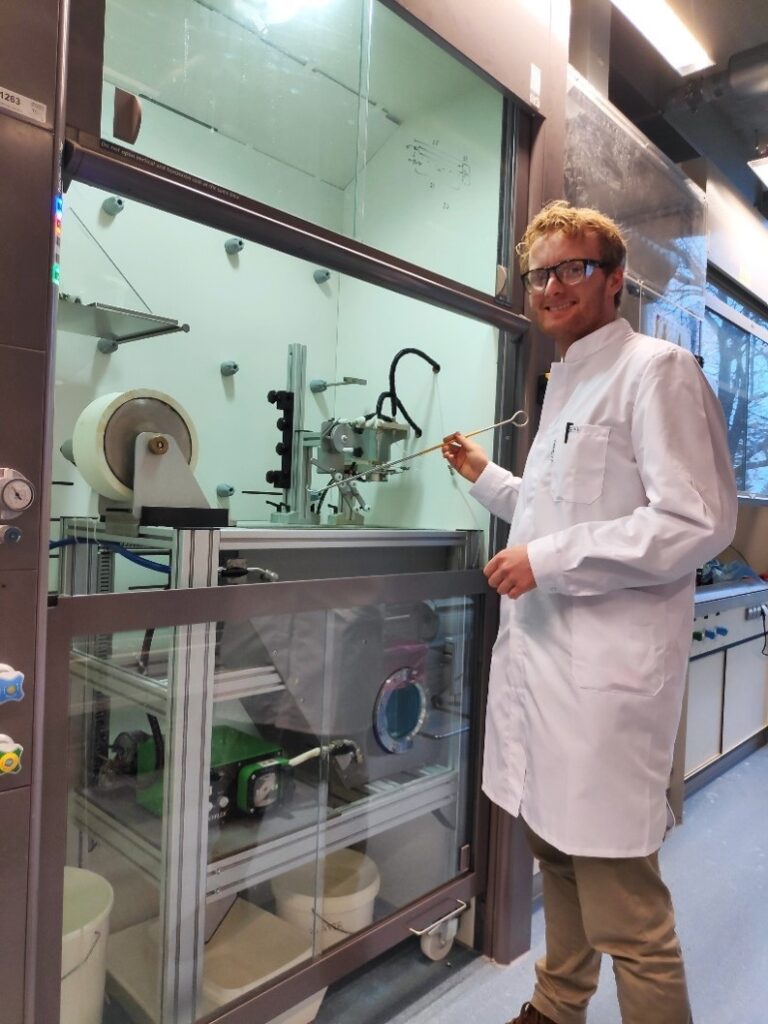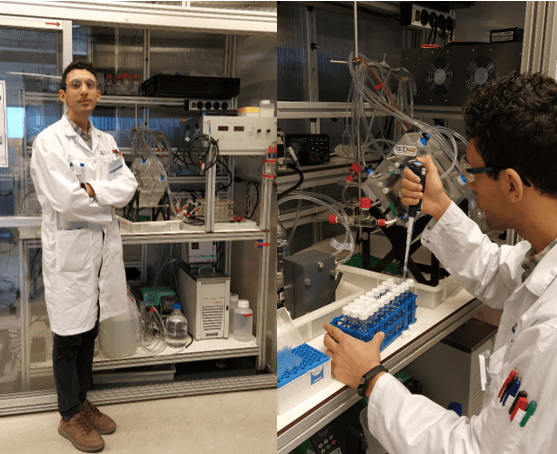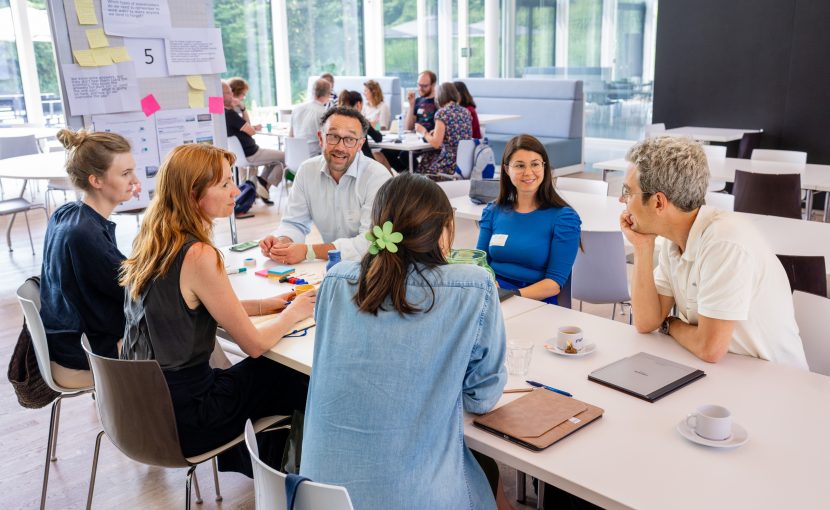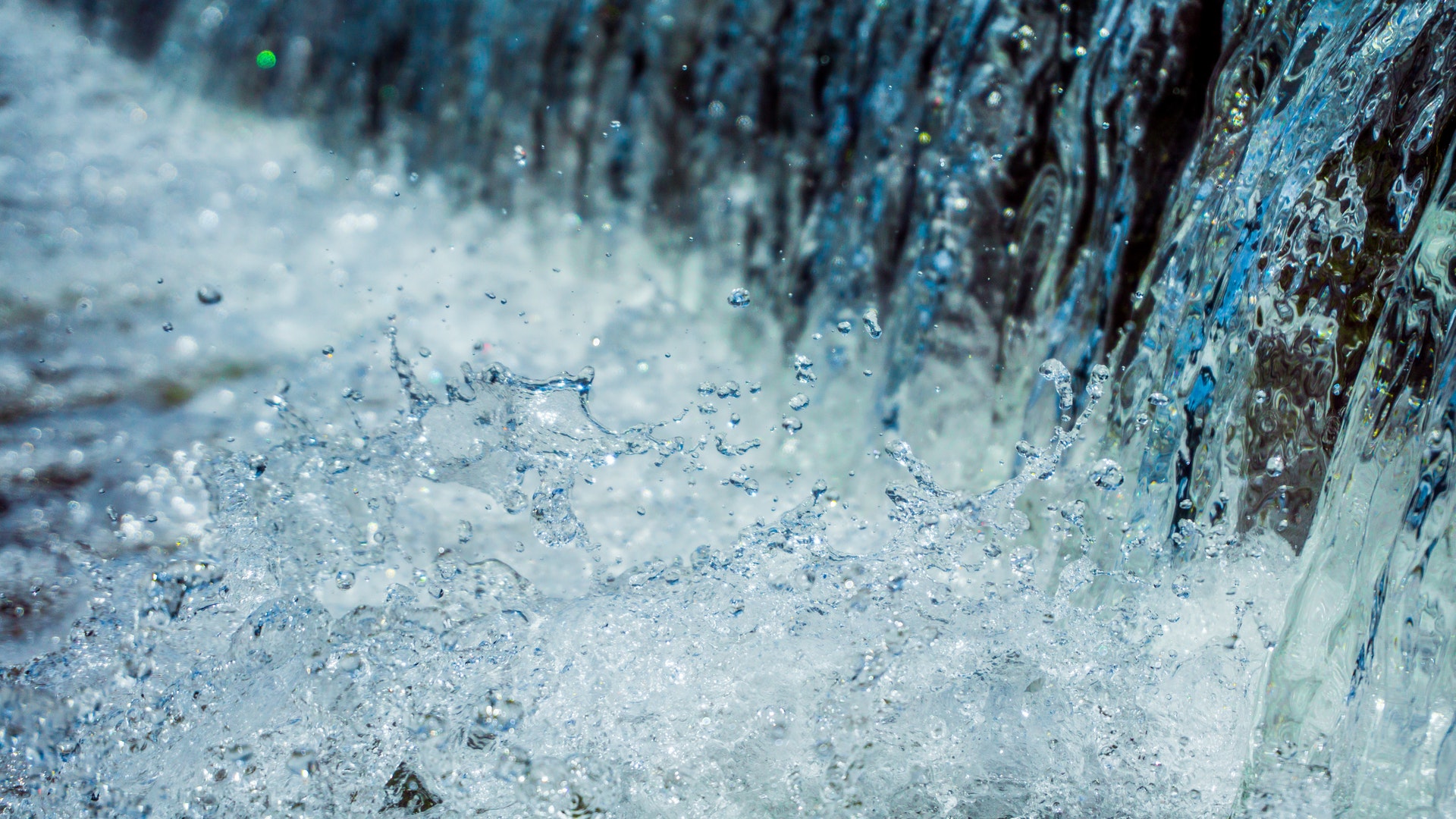New insights in membrane separation by Tjerk and Alaaeldin.
AquaConnect started already more than a year ago. At the moment, Tjerk and Alaaeldin are very busy with their experimental work in the laboratory, where they work on the development of new membranes for fit-for-purpose water treatment. Alaaeldin explores selective separation of water streams by electrodialysis. Tjerk develops new types of membrane configurations for nanofiltration.
Nanofiltration membrane development by Tjerk
Tjerk aims to improve the efficiency of hollow-fiber nanofiltration membranes by changing the geometry and flow profile of the membrane and membrane module. Hollow-fiber nanofiltration membranes are commercially available and applied for the removal of ions and micropollutants. The water that is treated with these membranes is pumped into the membrane fibers, where it is pushed through the membrane and separated in a clean- and a concentrated stream. By changing the geometry of the membranes and flow profile in the membrane module, the effective surface area and separation properties of the membranes can be enhanced. In addition, this reduces the physical- and environmental footprint of nanofiltration
At the moment, Tjerk is trying to create these innovative membranes in the laboratory through the dry-jet-wet spinning process (see figure 1). Important factors to consider while making these membranes are the membrane morphology, the water permeability and the mechanical strength of the membrane. At the moment, the mechanical strength of the membranes needs to be improved. To do so, Tjerk is developing a model to determine the ideal fiber dimensions at which the strength of the fibers and energy efficiency of the separation process are optimal. After Tjerk succeeds with creating these optimized membranes, he will continue to investigate the stability of the new membranes.

To demonstrate the applicability of the newly developed nanofiltration membranes, Tjerk will work on two demonstration cases. In the first case, nanofiltration will be used for the treatment of sewage water before it is used for greenery maintenance in the urban environment. In the second case, Tjerk will test his new nanofiltration membranes for the selective removal of ions from reverse osmosis concentrate.
Electrodialysis development by Alaaeldin
The main aim of the work of Alaaeldin is to develop an electrodialysis process for the selective separation of ions. For many applications of water reuse, selective removal of target ions can be beneficial. An example is the reuse of water in the horticulture: selective removal of sodium while keeping potassium, calcium and magnesium would be ideal, because too high concentrations of sodium are toxic for plants, while the other ions are essential for plant growth. However, it is currently not yet practical to selectively separate monovalent ions, such as sodium versus potassium.
Currently, Alaaeldin is modelling the transport of ions through differently modified electrodialysis membranes. The model is validated with experiments on an laboratory-scale electrodialysis system (see figure 2). The combination of the modelling and experimental work allows Alaaeldin to systematically test new membranes to reach his targeted selective ion removal.

To test his newly developed electrodialysis membranes, Alaeeldin will work on two application cases. In the first case, he will demonstrate his membranes for the treatment of irrigation water in horticulture to selectively remove sodium. In the second case, he will focus on the production of acids and bases industrial residual streams. In the latter, also Tjerk will contribute and both nanofiltration and electrodialysis will be combined for tailor-made treatment and recovery.


